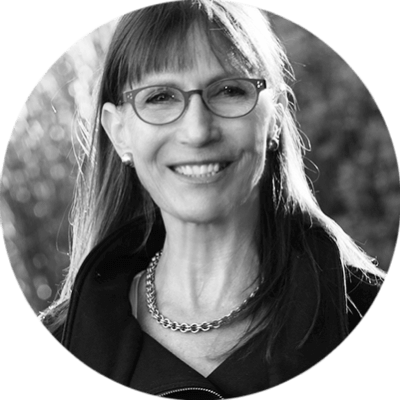[ad_1]


Supported by Science
Ask Gerda: Am I Just Peeing Out My Supplements?
Ask Gerda: Am I Just Peeing
Out My Supplements?

Gerda Endemann, our senior director of science and research, has a BS in nutrition from UC Berkeley, a PhD in nutritional biochemistry from MIT, and a passion for cherry-picking from our wellness shop. She spends a lot of her time interpreting research—established and emerging. You’ll find some of her deep dives into health conditions in our growing library of articles called goop PhD. You can send your own questions for Gerda to editorial@goop.com.
Dear goop, I started a new multivitamin, and now sometimes my urine is bright yellow. Am I just peeing out all the vitamins in my supplements? —Alicia S.
Hi, Alicia. No, you are not peeing out all the vitamins in your supplements! But seeing bright-yellow urine does make people wonder whether the vitamins they’re taking are doing any good. Supplements are useful: The Office of Dietary Supplements of the NIH says that quite a few people could benefit from taking multivitamins, including people over 50, people who could become pregnant, and people who avoid certain foods or have poor diets. That’s a lot of us.
Of course, not all supplements are created equal; you’ll pee out more from some than others. What you’re seeing is the fluorescent-yellow vitamin B2, riboflavin, that is left over from the multivitamin formulation after your body’s needs are met. This does not tell you how much was retained and used by your body. And it does not tell you what’s going on with other vitamins. I’m betting that your new multi contains 200–1,000 percent of the Daily Value (DV) for riboflavin. When supplements contain high amounts of a vitamin, it’s likely that not all of it is needed and your body will get rid of the extra. When a supplement contains less than 100 percent of the DV, your body will probably use a higher proportion and pee out less.
People worry about the bioavailability of supplements: “Will the capsule dissolve? Will the tablet disintegrate? Is the nutrient in the right form? Is it bioavailable?” In your case, you know that the pill dissolved and that the B2 was bioavailable, and here’s why. Before making it into your urine, the riboflavin had to be in the blood. To get into the blood, it had to move through the cells of the intestinal wall into the body (this is what “absorption” means). For this to happen, the pill had to disintegrate and the riboflavin had to be absorbed.
For most nutrients, the body has a logic behind what’s absorbed and what isn’t—this isn’t random. To keep levels of vitamins in the right range, the body regulates both input and output. First, will the nutrient be allowed to move through intestinal wall cells into the body, or will it be excreted in the feces? Then, if too much of a vitamin gets into the body, one excretion route is via the urine. So, from what you’ve seen, your multi does contain more riboflavin than you need.
There are reasons why supplements are formulated with widely varying amounts of vitamins. We don’t know exactly how much will be optimal in any particular situation. Your requirement for vitamin C may increase with surgery or infection or extreme sports. Iron requirements are hugely affected by heavy periods. And as far as riboflavin, there’s preliminary evidence that high doses may be helpful for some people with migraines.
The Daily Values that you see in supplement facts boxes are not tailored to individual requirements. These are the amounts that will cover the needs of most people most of the time. If you are taking a supplement with 50–100 percent of the DVs for vitamins, plus you are eating nutritious foods, you are probably getting what you need. In this case, you won’t be peeing out much.
All of this helps explain why goop’s science team formulated our Everyday Glow Multivitamin the way they did. If you take a look at the bottle’s supplement facts panel, you’ll see it contains 67–100 percent of 12 essential vitamins and 4 essential trace minerals. Here’s how to read that panel:
-
The amounts of the B vitamins are in line with what your body needs and uses every day and are less likely to be peed out or cause stomach discomfort than the high doses of B vitamins in some products. But they will support healthy brain function, neurotransmitter production, and energy levels.*
-
Also crucial for maintaining energy levels is iron. The Everyday Glow Multivitamin contains 100 percent of the DV of iron as Ferrochel®, a form of iron that is particularly gentle and easy on the stomach. By the way, iron is also crucial for healthy hair, and many women do not consume enough of this mineral.*
-
A well-formulated multivitamin aids every part of the body. Vitamin C is used for collagen production for healthy bones and skin. Vitamin D promotes calcium absorption and immunity. Selenium supports thyroid health.*
-
The Everyday Glow multi comes with some extras, too. The Lyc-O-Mato
 tomato extract with lycopene is what makes this formula glow. Lycopene and other compounds in the extract target the skin and support its natural antioxidant defense mechanisms against environmental stressors.*
tomato extract with lycopene is what makes this formula glow. Lycopene and other compounds in the extract target the skin and support its natural antioxidant defense mechanisms against environmental stressors.* -
A concentrated extract of ashwagandha rounds out the formula. It is one of the most revered botanicals in Ayurvedic medicine, used traditionally to support a healthy stress response.*
Like all supplements goop offers, the Everyday Glow multi is made according to current good manufacturing practices (CGMP). And, if you’re anything like me, you’ll appreciate that all that nutrition is contained in just two capsules in an easy-to-swallow size.*
Related Reading
Our Dietitian Answers Your Q’s
on the Everyday Glow Multivitamin
This article is for informational purposes only. It is not, nor is it intended to be, a substitute for professional medical advice, diagnosis, or treatment and should never be relied upon for specific medical advice. To the extent that this article features the advice of physicians or medical practitioners, the views expressed are the views of the cited expert and do not necessarily represent the views of goop.
*These statements have not been evaluated by the Food and Drug Administration. These products are not intended to diagnose, treat, cure, or prevent any disease.
Ferrochel® is a registered trademark of Balchem Corporation or its subsidiaries.
Lyc-O-Mato™ is a registered trademark of Lycored LTD.
[ad_2]
Source link


